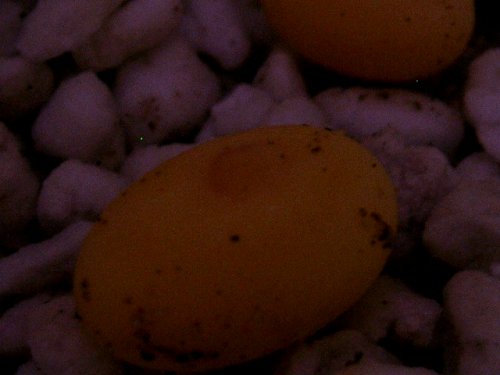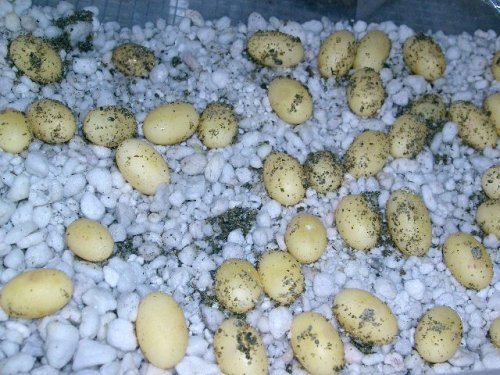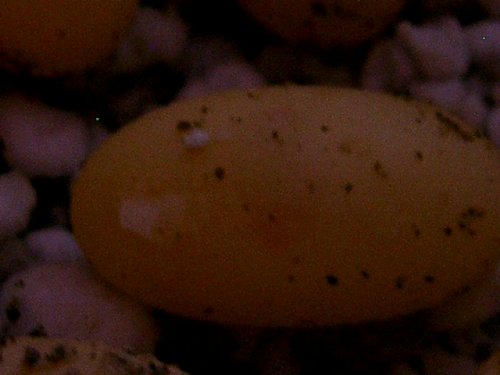Mredhorse
Member
Here is the info---
Female veiled has laid two cluches of eggs and all were yellow. The first cluch was infertile or seemed to be, with eggs showing no sigh of change I decided to open one and they were infertile.
Second cluch were yellow (laid March 3rd) and after 3 months decided to turn incubator off but in most of the eggs I noticed a pinhead size red dot.
Is this just the yolk breaking down? I have raised turtles, chickens, bearded pygmies, but no veiled eggs.(those all had a clear sign of embro development)
The shells are rubbery/firm and have no fungus. The color is still yellow, but the red dot is confusing me.
Thanks for any informatioin, I would hate to be getting rid of fertile eggs just because I did not wait long enough.
Personally I don't think they are good (but have been wrong before) and wanted a successful veiled breeders opinioin.
and wanted a successful veiled breeders opinioin.
Thanks
added pics. 1st is in the lower left of clutch and 3rd is in middle of cluch.
Female veiled has laid two cluches of eggs and all were yellow. The first cluch was infertile or seemed to be, with eggs showing no sigh of change I decided to open one and they were infertile.
Second cluch were yellow (laid March 3rd) and after 3 months decided to turn incubator off but in most of the eggs I noticed a pinhead size red dot.
Is this just the yolk breaking down? I have raised turtles, chickens, bearded pygmies, but no veiled eggs.(those all had a clear sign of embro development)
The shells are rubbery/firm and have no fungus. The color is still yellow, but the red dot is confusing me.
Thanks for any informatioin, I would hate to be getting rid of fertile eggs just because I did not wait long enough.
Personally I don't think they are good (but have been wrong before)
Thanks
added pics. 1st is in the lower left of clutch and 3rd is in middle of cluch.







